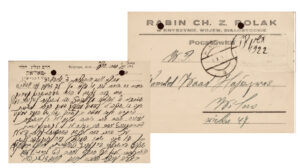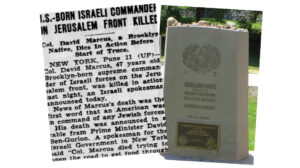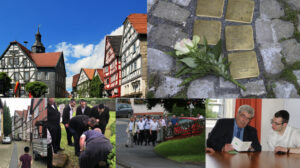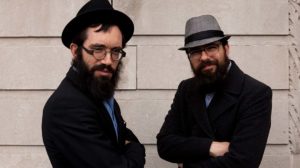Filmed for the Future

A new documentary casts a vivid light on Rav Meir Shapiro
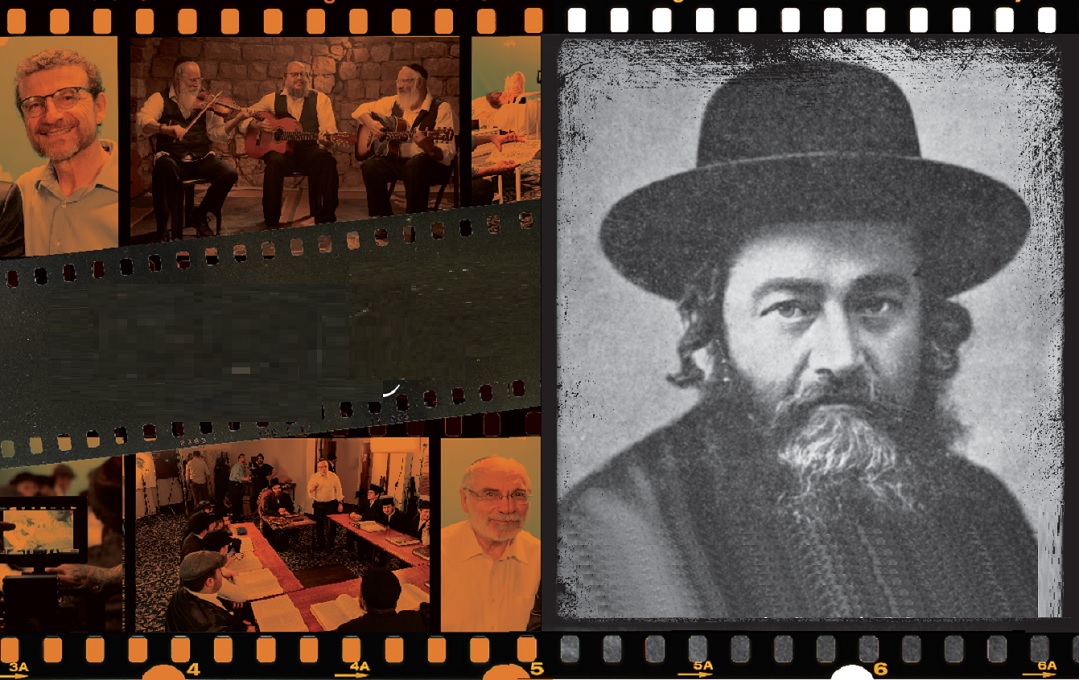
Seforim-lined, air-conditioned batei medrash and bochurim who know they can count on meals and a bed are the contemporary norms in today’s yeshivah world,
but not so long ago, these were unimaginable images. In the days when Daf Yomi founder Rav Meir Shapiro ztz”l decided to create his trailblazing Yeshivas Chachmei Lublin, young bochurim on the Polish landscape with mesirus nefesh for Torah learning would eat their meals humiliatingly at the homes of hosts who often could barely feed their own families, and sleep on shul benches or in factories as night watchmen.
What was Rav Meir Shapiro’s secret for forging ahead against the tide? How did he build a yeshivah that would give proper kavod to students and their Torah learning, despite all the naysayers? How did he create an enduring, worldwide learning program many thought impossible, nearly becoming but a vague memory during the Holocaust but then renewing itself to unify hundreds of thousands of Jews around the world? While Rav Meir’s short life (he passed away in 1933 from a throat infection, probably diphtheria, at age 46) was fraught with challenges from a young age, this extraordinary man was driven to change the face of world Jewry and establish Torah supremacy — and always with emunah, wit, and unbridled joy.
And now, so many previously hidden aspects of his life have been revealed in a just-released documentary entitled Only with Joy. This new video project of Better World Productions, which transports the viewer to prewar Poland, was the brainchild of Brooklyn-based Orthodox documentary filmmaker Menachem Daum, whom readers might remember as the creator of the breakthrough 1997 PBS documentary A Life Apart: Hasidism in America, which opened a window for the wider American public into chassidic life. In this newest production though, his target audience is no longer the secular outsiders, but Rav Meir Shapiro’s own spiritual inheritors who are ready for a sophisticated, professionally-produced glimpse into the life of this Torah giant.
“About 25 years ago, shortly before I finished A Life Apart, I got interested in making a film about Rav Meir Shapiro,” says Daum, a gerontologist by profession with a Ph.D. in Education who served for many years as research director of the Brookdale Center on Aging at Hunter College. Around that time, he picked up a copy of the book A Blaze in the Darkening Gloom, a Feldheim-produced biography of Rav Meir Shapiro based on a Yiddish manuscript written in 1934 by a talmid, Yehoshua Baumol, who was killed in the Holocaust. Daum is not only an avid reader of pre-war Eastern European history, he’s traveled within the region numerous times.
“A part of me lives in prewar Europe,” says Daum, who was born in a DP camp in Germany after the war, to Polish Holocaust survivors. Referring to the legacies left there by the great Jews of the past, he says, “the sparks are still in the air.” After reading Baumol’s book, Daum felt driven to locate Rav Meir’s surviving talmidim to learn firsthand about this remarkable man. Aided by his sons, he tracked down and filmed interviews with eight talmidim — by then elderly rabbanim — in America and Israel and captured their memories on film as they described their lives as students of Yeshivas Chachmei Lublin.
The process became something of a family effort. “I didn’t have a budget to get another film off the ground at the time, so I enlisted my sons to conduct many of the interviews while I operated the camera. My son Akiva, who was then studying in the Mir in Jerusalem, conducted the earliest interviews in the mid-’90s. My son Tzvi Dovid did the more recent interviews with contemporary historians and rabbanim.” Tzvi Dovid Daum also invested in researching documents, articles and anything else he could find about Rav Meir and Yeshivas Chachmei Lublin.
About a year and a half ago, Menachem Daum contacted filmmaker David Lenik with the material he’d accrued. “He approached me with an amazing collection of interviews that he had the foresight to record back in the ’90s,” says Lenik, “and I quickly realized that what I was looking at was a treasure chest of information that could inspire all of us.”
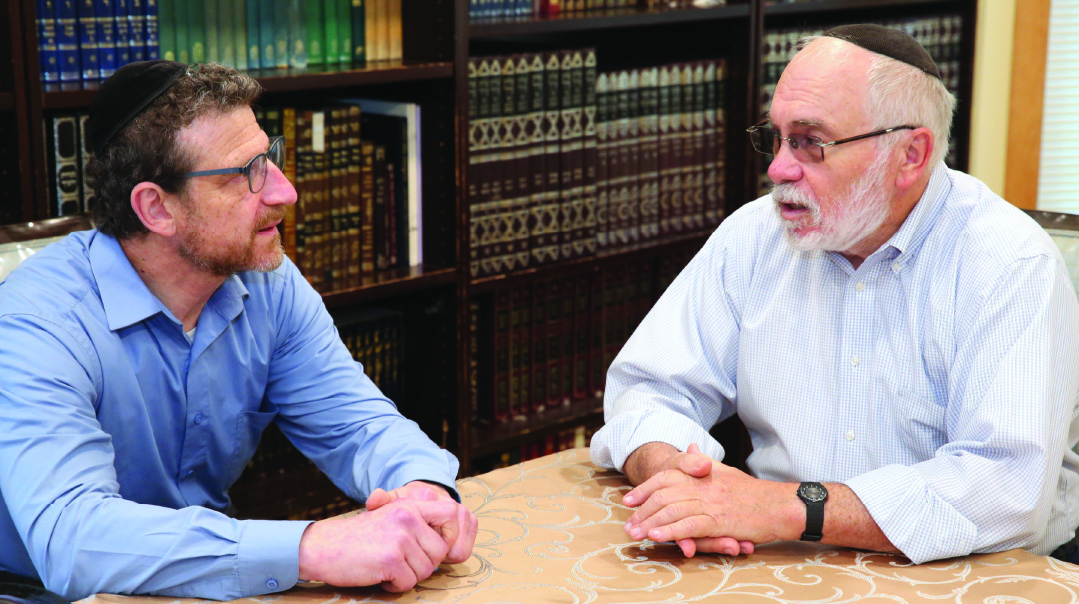
Filmmakers David Lenik (L) and Menachem Daum came with different skill sets but one goal.“I don’t think either of us could have made a better film on our own"
Spirited Collaboration
Although this is their first collaboration, professional filmmakers Menachem Daum and David Lenik have been producing Jewish content for many years, although they come from different personal and professional backgrounds. Daum is a documentary filmmaker whose survivor parents stemmed from Gerrer chassidim. Lenik is an all-American and graduate of Aish HaTorah, whose work is primarily oriented to family entertainment.
“I wanted to ensure that the film would appeal to a younger audience as well,” says Lenik, “and that meant utilizing various visual conventions and incorporating a certain musical style, as well as the overall pace of the story.”
How did the two disparate artists meld their styles and goals? “We were like chavrusas in yeshivah who argue with each other, but it’s all in an effort to find the best way to interpret a difficult sugya,” Daum reveals.
“I don’t think either of us could have made a better film on our own, and the film has been enriched as a result of our spirited collaboration,” added Lenik.
Their combination of talents and complementary strengths ultimately yielded a powerful and appealing product that teaches, entertains, and inspires. While they might not have agreed on every element of the film, they shared a common goal of presenting Rav Meir Shapiro as a visionary leader who constantly presented creative solutions to Klal Yisrael’s many problems. “But we also wanted to paint his detractors with an even brush, so the audience could make up their own minds about how they felt about those topics,” says Lenik.
And that’s really what a documentary is all about — educating and communicating without taking sides or sugarcoating. Daunting as this may seem, Menachem Daum has succeeded at what he calls his “expensive hobby,” when he made his mid-life career shift from working with the elderly to creating documentary films. His nationally televised A Life Apart was produced as a tribute to his survivor parents and their generation of the she’eris hapleitah, who held on to their observance and clung to their heritage with steadfast tenacity. Before that, in 1988, he produced the Emmy-nominated film In Care Of, which explored the ethical and practical dilemmas raised when an elderly person becomes impaired. In 2004, he created Hiding and Seeking, which began as a search to reconnect with the Poles who sheltered his wife’s family, and developed into a film on Polish gentiles who sheltered Jews during World War II. Through his research, the family who saved his wife’s family was given an award by Yad Vashem.
David Lenik, the owner of Better World Productions, was formally trained in film and started his career as a cameraman for TV commercials with such clients as Goodyear, Kleenex, and Cheer detergent. After studying at Aish HaTorah and moving to New York, he began producing interactive tourist presentations for major cities around the world (remember NY Skyride?). Lenik realized that for a frum Jew to make it in the industry, he would have to either serve as the writer or the producer of a given project in order to control the schedule and avoid Shabbos conflicts. And so, he created his own independent production company — Better World Productions — conveying his altruistic goal of bettering the world. Quoting Rav Noach Weinberg, he explains that while only Hashem can create something from nothing, the mission of a Jew is to emulate that in the physical word — and Lenik says he tries to do that through film.
“Creative people are drawn to creating something new,” he says. “We are born to be creative, and through the medium of film, one can create wholly new worlds.” Among other accomplishments, Lenik produced a series of educational documentaries in partnership with Torah Umesorah called the Zechor Yemos Olam series, which relates the positive, inspiring aspects of the Holocaust, its heroes, and the Hashgachah and Divine protection that so many experienced.
With their goal and target audience defined — directed toward adults within the Torah world, with the ability to pass on the mesorah to children as well — they applied their skills accordingly. Menachem Daum cowrote the script with Yehuda Wurtzel, and the editing was done by David Lenik. Dr. Joseph Geliebter, who had spearheaded the Torah Umesorah Zechor project, acted as executive producer, supplying contacts and advice.
The film depicts the Poland of the 1920s and ’30s. Vintage photographs are judiciously used throughout the video and provide authenticity, but pictures alone can’t bring an era to life. Lenik shares that his greatest challenge was providing imagery where none actually existed. In addition, he had to create a storyline that would speak to an educated audience, young and old, yet not be too provincial or too exclusive.
“That was where we got to flex our creativity,” he says. His resourceful solution was to use re-enactments, dispersed throughout the film, illustrating the pivotal events in Rav Meir Shapiro’s life. Some of these reenactments are portrayed in black silhouette; others appear as if they were pencil-drawn and animated. In fact, a cast of about 30 actors, costumed and supported by full stage settings, assembled in an auditorium supplied by the Chofetz Chaim Heritage Foundation, to act out the scenes. Quasi-animated tools (called after effects) were applied to manipulate the imagery and achieve the hand-drawn and shadowed effects.
The film was shot from locations in Poland, Israel, and New York. Ely Bineth of the Traveling Chassidim troupe was the actor who portrayed Rav Meir. “With a little makeup and beard broadening, he not only looked the part, he was a perfect example for the other bochurim on the set, led the singing and dancing, and was the voice-over of Rav Meir’s own words in Yiddish. Bineth provided other voice-overs too, and also supplied the Yiddish handwriting for the letter-writing frames. He even came up with an actor to play the young version of Rav Meir — his own younger brother.
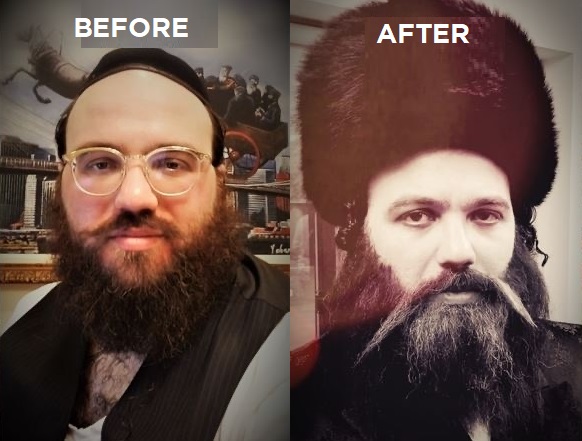
Lenik met with everyone ahead of time and cast the roles, while his wife, Leta, a former actress and choreographer who is now also a filmmaker, handled the costumes and makeup, and in one of the film’s frames was the “animated” figure of Rav Meir’s wife.
Music from the Heart
The film incorporates one of Rav Meir Shapiro’s lesser known accomplishments — his music. Rav Meir composed scores of niggunim throughout his short life — many of which are still sung today (think “Ashrei Ish Shelo Yishkacheka” and “Utzu Eitza”) — that gave him and his talmidim strength in the face of their challenges, and joy in their celebrations. For the music, Lenik chose to work with the Simply Tsfat trio, recording in their studio in Israel. “They are super talented, know how to bring out real simchah in the songs, and have an easy way about them,” he says.
Being daf yomi learners themselves and having recorded Rav Meir’s music before, the men of Simply Tsfat were happy to partner in the project. One of the niggunim they play as background alludes to the most challenging part of Rav Meir’s life. Rav Meir and his wife were not blessed with a family and they looked upon the talmidim of Chachmei Lublin as their own children. The talmidim reciprocated their love and looked upon them as parents. “When I hear the haunting melody of ‘Zarah Chayah VeKayamah,’ a prayer for children, I can feel the longing and emotions within Rav Meir as he composed this beautiful niggun,” says Daum, who chose which of Rav Meir’s dozens of songs to incorporate into the production.
Rav Meir was an amazing orator, and listening to his talmidim speak of him 65 years later, it seems they too received his gift of expression. These men, no longer alive but in their eighties when filmed, bring the audience back into prewar Lublin and relive their experiences with clarity and simplicity. Lenik recalls an extremely rewarding reaction to an early airing of the film. The family of one of the featured talmidim, Rav Michoel Tenenbaum, supported the production as a memorial to their father. On a spiritual pilgrimage to Poland with over a hundred Gerrer chassidim, Rav Michoel’s son, Motel Tenenbaum, screened the almost-completed film in the original Chachmei Lublin building (which is now a hotel). He called Lenik to report that the audience sat in complete silence for the duration the film and many were brought to tears.
Though we associate Rav Meir Shapiro as being the founder and champion of Daf Yomi, Daum and Lenik chose not to focus on that amazing achievement — which was actually only one of Rav Meir’s many accomplishments. Instead they chose to examine where his heart and soul were bound — to Yeshivas Chachmei Lublin.
Paid Up with his Life
In early 20th-century Poland, much to the surprise of many who tend to idealize the spiritual elements of that era, intense Torah learning was often unappreciated, yeshivah bochurim scorned. Still reeling from a disastrous world war, Poland of the 1920s and ’30s was poverty stricken, and the pressure to earn one’s daily bread was all-consuming. The Haskalah, socialism, and communism were ravaging the younger generation.
The yeshivos of this period possessed an extremely high level of scholarship but followed a different blueprint. A yeshivah was comprised of only two elements: a beis medrash and a maggid shiur. The bochurim had to find food and lodging on their own. They begged for meals from impoverished community members. Often, they would take jobs as night watchmen, locked in factories overnight, just to have a place to sleep. Menachem Daum explains, “For all intents and purpose, they were homeless. They endured unimaginable mesirus nefesh to learn. Rav Meir knew that by making the yeshivah student into a schnorrer, he would never grow to be a leader.”
The honor of Torah was in decline and Rav Meir fought to elevate it; he wanted to build a new generation of leaders and raise the prestige of the Torah student in the eyes of Polish Jewry. He envisioned a large, modern yeshivah that would become a world-wide center for Talmudic studies and would also offer accommodations for the yeshivah students. After considering several towns and locations, he settled on the city of Lublin, which had a rich history of nurturing talmidei chachamim. At that time, Lublin was home to 37,000 Jews, about 40% of the city’s population.
The mesirus nefesh of the post-World War I yeshivah bochur may well have been outmatched by Rav Meir’s own mesirus nefesh in building Yeshivas Chachmei Lublin. In 1924, a property was donated, a cornerstone was laid, and Rav Meir began six backbreaking years of fundraising to see his dream come to fruition. The magnificent Yeshivas Chachmei Lublin opened in June of 1930 — a six-story modern building with central heating. It contained a boiler room, laundry, bathrooms, a mikveh, a bakery, kitchens, a dining room, a library of thousands of seforim, a conference room, an apartment for the rosh yeshivah, guest rooms, and a large shul. This was besides the comfortable dormitory rooms for students. The front of the building was landscaped with garden paths, benches, and trees, and on the first floor was a large-scale model of the Beis Hamikdash. Rav Meir used it as a study aid for the talmidim, as he was a proponent of learning Seder Kodshim, an oft-neglected section of Talmud dealing with laws relating to the Beis HaMikdash.
Rav Meir was a man ahead of his time. He had the yeshivah accredited by the government so that his talmidim would be eligible for government-paid positions as town rabbis — but these would be no mere political appointments: In order for a bochur to be accepted into the yeshivah, he had to know 200 blatt Gemara by heart. Rav Meir envisioned creating a new generation of exemplary Torah leaders. His long- term plan was to open a branch of the yeshivah in Eretz Yisrael and relocate there. And although he wouldn’t live to see it, and the yeshivah would survive just six years after his passing before being overrun by the Nazis, he succeeded in his goal — his students would be princes of Torah.
Rav Meir and his wife, Malka Tova, were childless and gave all their resources to the yeshivah, including her substantial dowry and inheritance (her parents were wealthy), but the debts were always pressing and the financial pressure relentless. Rav Meir was forced to source funding across Europe and in America, where he remained for over a year. Only toward the end of his stay in America did he begin having some success, but until then, the honor accorded him — as a well-known rav and rosh yeshivah, president of the Polish Agudah, and a representative to the Polish Parliament — didn’t translate into funds (at one point he even had to sell his watch to pay for lodgings). Ultimately though, he paid off the yeshivah’s debts with his life. He was quoted as saying that he had one son and one daughter — his son was Daf Yomi and his daughter was Yeshivas Chachmei Lublin. And in fact, the yeshivah was the benefactor of a life insurance policy he was forced by the banks to take out as collateral for his loans. Rav Meir was a young and vigorous man in excellent health when Prudential Life Insurance Company opened a branch in Poland and offered him a sizable policy at a reasonable rate. In 1933, only three short years after establishing the yeshivah and only a few months after purchasing the insurance policy, Rav Meir became suddenly ill with a severe throat infection. What today would be treatable felled this giant in Torah within a week.
Upon his death, his insurance policy paid out to his named beneficiary — his “daughter,” Yeshivas Chachmei Lublin — a sum that would today be equivalent to many millions of dollars.
Her Husband’s Dream
This surprising fact was just one of many that Menachem Daum and David Lenik discovered over the course of the project. Another surprise was learning about Rav Meir’s wife and her incredible mesirus nefesh. The Rebbetzin was from a wealthy home and gave over all her personal assets to the yeshivah to further her husband’s dream. Ironically, she too died at a young age, within a scant few months of her husband’s death. “We still don’t know what she died of or why she was buried in Warsaw rather than next to her husband in Lublin,” Daum discloses. “But the next time I visit the Warsaw Jewish Cemetery, I’ll make it a point to visit her kever.” He hopes that more people will be drawn to visit and daven at her kever and show her the respect she richly deserves.
Rav Meir was buried in an ohel in the new Jewish cemetery in Lublin. Miraculously, his was the only monument that wasn’t desecrated by the Nazis — they apparently didn’t recognize that the structure was a grave, and while all the surrounding gravesites were destroyed, this alone was left intact. In 1958, Rav Meir’s brother, who had survived the war and made it to the shores of America, had Rav Meir’s remains transported to Jerusalem and reinterred on Har Hamenuchos. Today, his grave is a destination and a place for tefillah.
Last year, on 7 Cheshvan, Rav Meir’s yahrtzeit, Daum and Lenik sent a team to the kever and filmed its visitors over the course of the day. “The assortment of Jews that came was so fascinating,” comments David Lenik. “There were 300–400 people who visited over the course of the day, speaking Yiddish, Hebrew, English, hailing from all parts of the world and from all sectors of Yiddishkeit.”
For his part, Lenik knew that Rav Meir Shapiro was a trailblazer, but as he researched for the project, he learned that Rav Meir was not only incredibly astute at reading his audience, he was also on the cutting edge as a marketer. “It was amazing to see the creative ways he packaged his ideas,” Lenik says. They even found references indicating that he had arranged for the filming of a short marketing film about Yeshivas Chachmei Lublin. “That was the early 1930s, when that kind of thing was unheard of. Unfortunately, golden as it would have been, we couldn’t find out any more about this film and no copies of it are known to exist.”
Rav Meir believed that if given a decade, the graduates of Yeshivas Chachmei Lublin would spread out over the world and change the face of Torah Jewry. But it was not meant to be. The yeshivah opened its doors in 1930 with approximately 200 students and functioned in the building only until 1939. When the Nazis took over Lublin, they stripped the interior. Many of its students were killed in nearby Majdanek and in other death camps the Nazis established across Poland. Of his progeny, Rav Meir’s “son” — Daf Yomi — survived and flourished, but the legacy of his beautiful “daughter,” Yeshivas Chachmei Lublin, is less apparent. The building still stands today as a four-star luxury hotel — the sounds of Torah replaced by the chatter of vacationers.
The Last L’chayim
With the story of Rav Meir told and available to the public, what’s next on the agenda for Only with Joy’s two talented producers? Menachem Daum is working on another documentary film called, Gone but Not Forgotten, about Poles working to preserve Jewish memories by refurbishing sacred Jewish sites. Why would they spend time and effort restoring old Jewish cemeteries and shuls? Most of Poland today is made up of Ethnic Roman Catholic Poles, as most minorities were wiped out in World War II. Daum explains that, “It’s a calling, a spiritual thing. It’s not guilt.” These Poles are patriots; they feel that the Jews are part of Polish history and must be remembered. Their goal is to protect the history of Polish Jews and other Polish minorities from cultural extinction, defying their country’s ethno-nationalists who only recognize Roman Catholics of Polish ethnic origin as authentic Poles.
David Lenik is working on another feature film whose objective is to change people’s perception of the chareidi/chassidic community and positively reflect their lifestyle. The storyline is relatable and centers around how the main character must deal with a challenging choice — but we’ll have to wait until the film comes out to find out what happens. Lenik hopes the film will help counter the negative impressions and bad press recently visited upon these communities through other films and television series. Meanwhile, Torah Umesorah has requested that the producers create a school version of Only with Joy and they are currently working on cutting the film down to fit into a single class period.
Rav Meir was spared seeing the downfall of his beloved yeshivah. But perhaps its demise would not have completely broken him. In his book, Yehoshua Baumol quoted his rebbi expressing his life’s credo: “I’ve been laden with a hefty pack of tzaros,” Rav Meir would often say. “Well, instead of worrying and agonizing over them, I decided to be happy with them and sing for joy over them… for the blessed Holy One helps only in simchah, only through a cheerful spirit.”
On his deathbed, Rav Meir asked his students to drink a l’chayim in his presence and dance around his bed, singing “B’cha Batchu Avoseinu,” one of his niggunim they knew so well. As he noticed some of them sobbing, he summoned his last bit of strength (he could no longer speak) and wrote a final message to his talmidim: two words that were his true legacy: “Nohr besimchah — Only with joy!” Then he snapped his fingers and was gone. Though just six years later his precious yeshivah was overrun by the Nazis and the generation virtually destroyed, Rav Meir achieved his life goal —he lived and died only with joy.
(Originally featured in Mishpacha, Issue 819)
Only with Joy is available for viewing or download at no cost at www.onlywithjoy.org.
Oops! We could not locate your form.

